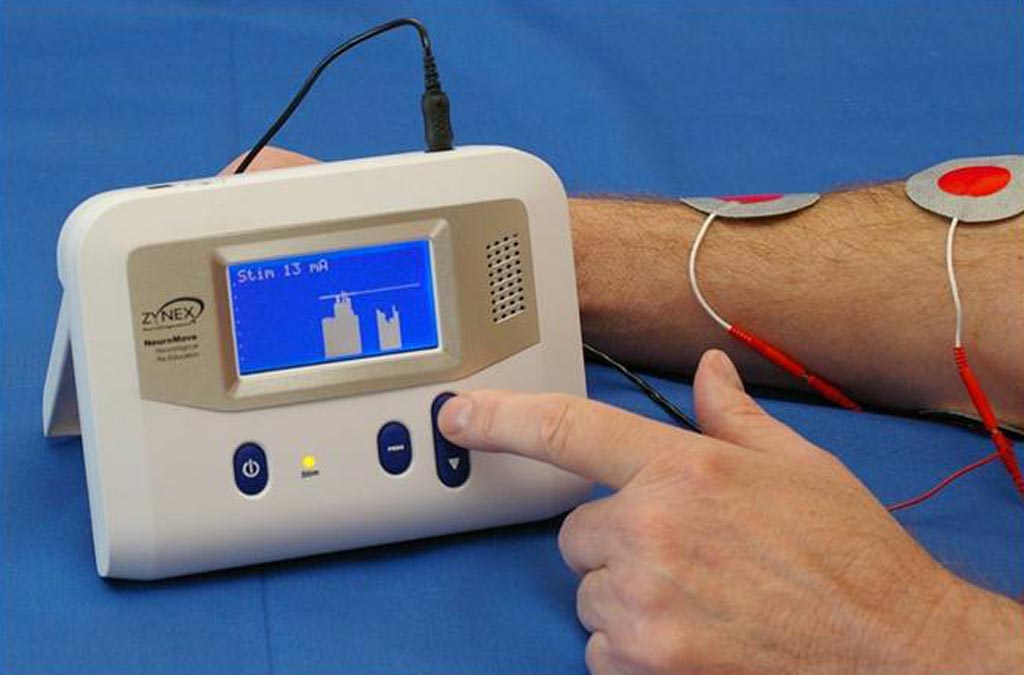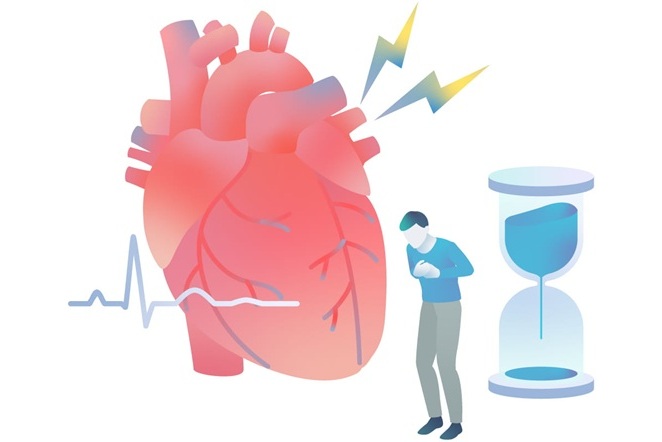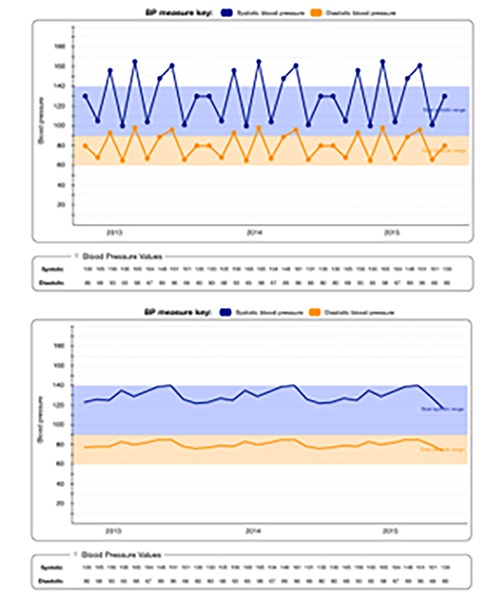Neuroplasticity Device Helps Recover Muscle Control
|
By HospiMedica International staff writers Posted on 15 Feb 2018 |

Image: An EMG feedback device helps stroke patients recover muscle control (Photo courtesy of Zynex).
A novel device helps stroke and spinal cord injury patients regain movement by using the brain's ability to rewire itself.
The Zynex (Lone Tree, CO, USA) NeuroMove 900 device is designed to detect signals sent by the patient’s brain to a certain muscle group by analysis of electromyography (EMG) readings using two adhesive electrodes. A built-in microprocessor distinguishes when an EMG signal represents regular muscle activity, muscle tone, noise, or a real attempt to move a muscle. When such a real attempt is detected, the unit “rewards” the patient with a few seconds of muscle contraction, with additional visual and sensory feedback serving as an important element in relearning the movement.
NeuroMove can detect attempts even when the trace movements are below visible levels, thus assisting healthy parts of the brain assume lost functionality. NeuroMove also prompts the patient to relax just as often (a significant element in learning to control a muscle group), as better relaxation of a muscle group can sometimes be noticed just ten minutes into a treatment session. The system adjusts automatically to the levels produced by each patient and to each new session, making it effective both for patients with spasticity/muscle tone, as well as for patients with flaccid extremities.
“Stroke is the leading cause of serious, long-term disability in the United States and the NeuroMove 900 is uniquely positioned to enhance the patient's recovery,” said Thomas Sandgaard, founder and CEO of Zynex. “Under a newly designed marketing strategy, healthcare practitioners will be able to use the NeuroMove 900 on patients clinically and then easily transition the patient's rehabilitation to the patient's home once discharged from the clinic.”
EMG is an electrodiagnostic technique for evaluating and recording the electrical activity produced by skeletal muscles when electrically or neurologically activated in order to detect neurological and neuromuscular problems. It is used diagnostically to study biomechanics, motor control, neuromuscular physiology, movement disorders, postural control, and for physical therapy.
Related Links:
Zynex
The Zynex (Lone Tree, CO, USA) NeuroMove 900 device is designed to detect signals sent by the patient’s brain to a certain muscle group by analysis of electromyography (EMG) readings using two adhesive electrodes. A built-in microprocessor distinguishes when an EMG signal represents regular muscle activity, muscle tone, noise, or a real attempt to move a muscle. When such a real attempt is detected, the unit “rewards” the patient with a few seconds of muscle contraction, with additional visual and sensory feedback serving as an important element in relearning the movement.
NeuroMove can detect attempts even when the trace movements are below visible levels, thus assisting healthy parts of the brain assume lost functionality. NeuroMove also prompts the patient to relax just as often (a significant element in learning to control a muscle group), as better relaxation of a muscle group can sometimes be noticed just ten minutes into a treatment session. The system adjusts automatically to the levels produced by each patient and to each new session, making it effective both for patients with spasticity/muscle tone, as well as for patients with flaccid extremities.
“Stroke is the leading cause of serious, long-term disability in the United States and the NeuroMove 900 is uniquely positioned to enhance the patient's recovery,” said Thomas Sandgaard, founder and CEO of Zynex. “Under a newly designed marketing strategy, healthcare practitioners will be able to use the NeuroMove 900 on patients clinically and then easily transition the patient's rehabilitation to the patient's home once discharged from the clinic.”
EMG is an electrodiagnostic technique for evaluating and recording the electrical activity produced by skeletal muscles when electrically or neurologically activated in order to detect neurological and neuromuscular problems. It is used diagnostically to study biomechanics, motor control, neuromuscular physiology, movement disorders, postural control, and for physical therapy.
Related Links:
Zynex
Latest Patient Care News
- Portable Biosensor Platform to Reduce Hospital-Acquired Infections
- First-Of-Its-Kind Portable Germicidal Light Technology Disinfects High-Touch Clinical Surfaces in Seconds
- Surgical Capacity Optimization Solution Helps Hospitals Boost OR Utilization

- Game-Changing Innovation in Surgical Instrument Sterilization Significantly Improves OR Throughput
- Next Gen ICU Bed to Help Address Complex Critical Care Needs
- Groundbreaking AI-Powered UV-C Disinfection Technology Redefines Infection Control Landscape
- Clean Hospitals Can Reduce Antibiotic Resistance, Save Lives
- Smart Hospital Beds Improve Accuracy of Medical Diagnosis
- New Fast Endoscope Drying System Improves Productivity and Traceability
- World’s First Automated Endoscope Cleaner Fights Antimicrobial Resistance
- Portable High-Capacity Digital Stretcher Scales Provide Precision Weighing for Patients in ER
- Portable Clinical Scale with Remote Indicator Allows for Flexible Patient Weighing Use
- Innovative and Highly Customizable Medical Carts Offer Unlimited Configuration Possibilities
- Biomolecular Wound Healing Film Adheres to Sensitive Tissue and Releases Active Ingredients
- Wearable Health Tech Could Measure Gases Released From Skin to Monitor Metabolic Diseases
- Wearable Cardioverter Defibrillator System Protects Patients at Risk of Sudden Cardiac Arrest
Channels
Critical Care
view channel
Breakthrough AI Technology Accurately Assesses Heart Failure Severity
Heart failure (HF) is a complex condition where the heart cannot effectively pump blood to meet the body’s needs due to underlying medical issues. It is marked by recurring episodes and frequent hospitalizations.... Read more
New Approach to Visualizing Blood Pressure Data Can Help Better Manage Hypertension Patients
Sometimes, a patient’s blood pressure may be elevated in a doctor's office but normal at home, a phenomenon known as white coat hypertension. It is estimated that 10% to 20% of high blood pressure diagnoses... Read moreSurgical Techniques
view channel
DNA Origami Improves Imaging of Dense Pancreatic Tissue for Cancer Detection and Treatment
One of the challenges of fighting pancreatic cancer is finding ways to penetrate the organ’s dense tissue to define the margins between malignant and normal tissue. Now, a new study uses DNA origami structures... Read more
Pioneering Sutureless Coronary Bypass Technology to Eliminate Open-Chest Procedures
In patients with coronary artery disease, certain blood vessels may be narrowed or blocked, requiring a stent or a bypass (also known as diversion) to restore blood flow to the heart. Bypass surgeries... Read more
Intravascular Imaging for Guiding Stent Implantation Ensures Safer Stenting Procedures
Patients diagnosed with coronary artery disease, which is caused by plaque accumulation within the arteries leading to chest pain, shortness of breath, and potential heart attacks, frequently undergo percutaneous... Read more
World's First AI Surgical Guidance Platform Allows Surgeons to Measure Success in Real-Time
Surgeons have always faced challenges in measuring their progress toward surgical goals during procedures. Traditionally, obtaining measurements required stepping out of the sterile environment to perform... Read moreHealth IT
view channel
Printable Molecule-Selective Nanoparticles Enable Mass Production of Wearable Biosensors
The future of medicine is likely to focus on the personalization of healthcare—understanding exactly what an individual requires and delivering the appropriate combination of nutrients, metabolites, and... Read more
Smartwatches Could Detect Congestive Heart Failure
Diagnosing congestive heart failure (CHF) typically requires expensive and time-consuming imaging techniques like echocardiography, also known as cardiac ultrasound. Previously, detecting CHF by analyzing... Read moreBusiness
view channel
Expanded Collaboration to Transform OR Technology Through AI and Automation
The expansion of an existing collaboration between three leading companies aims to develop artificial intelligence (AI)-driven solutions for smart operating rooms with sophisticated monitoring and automation.... Read more

















